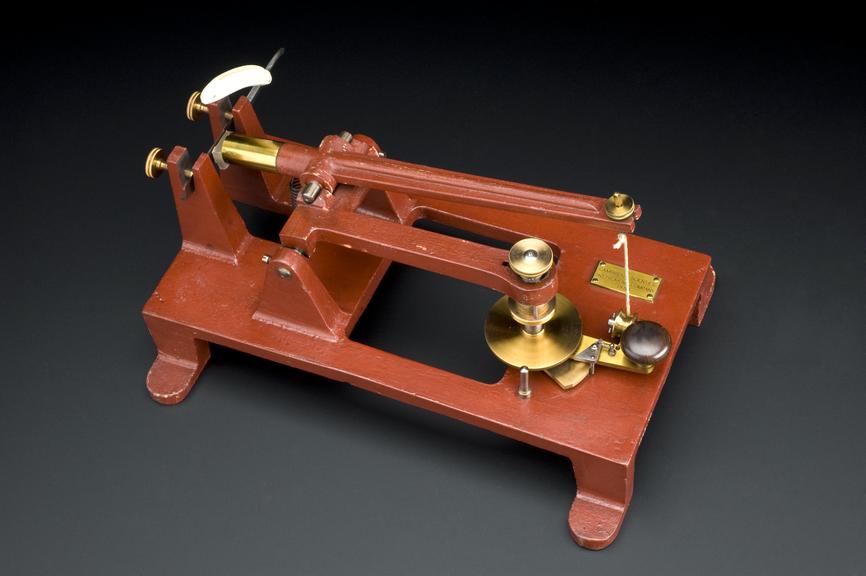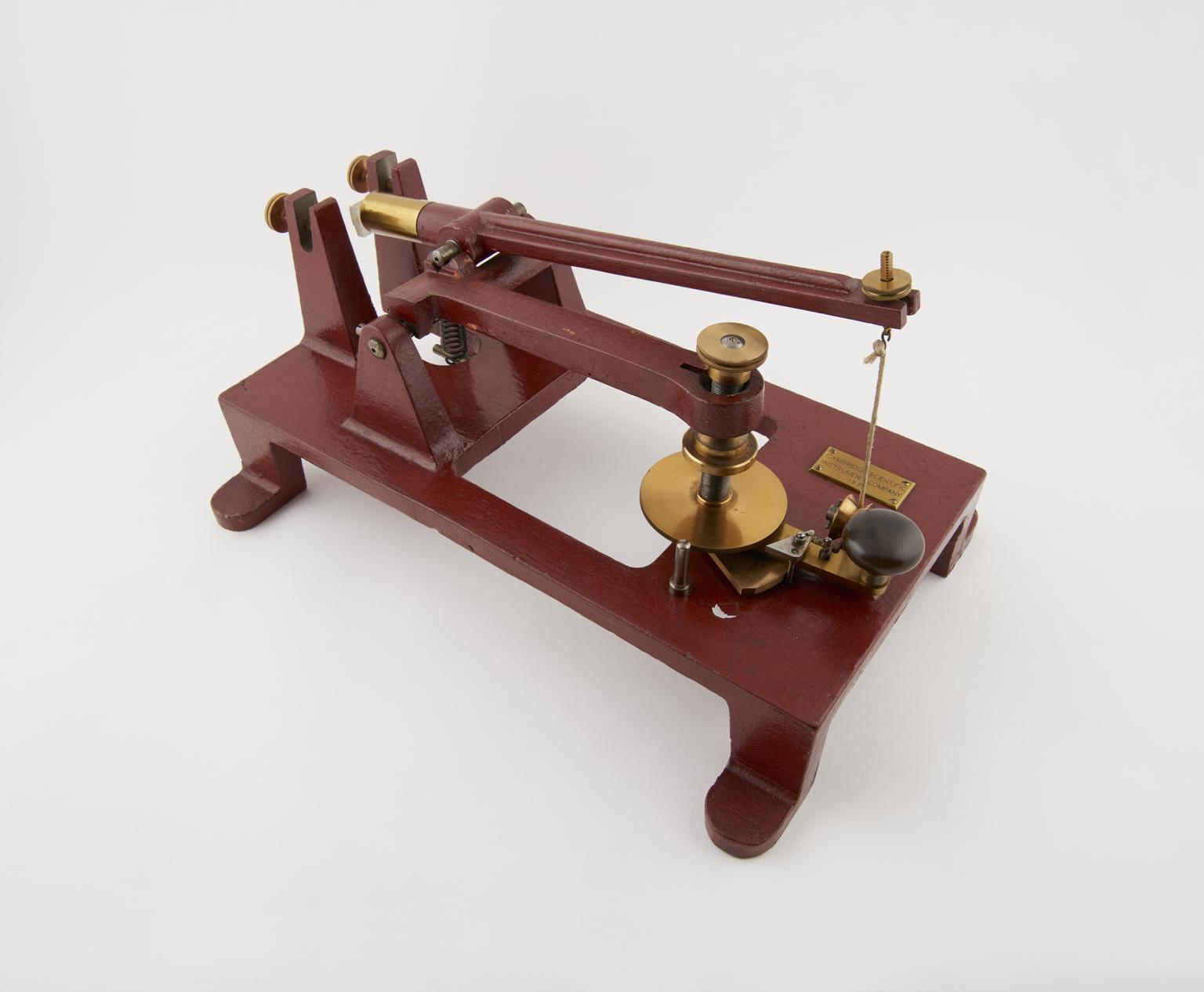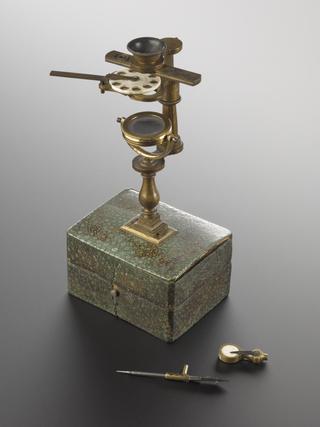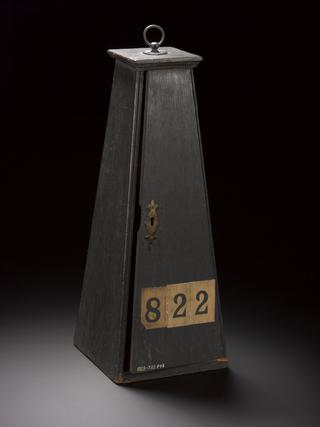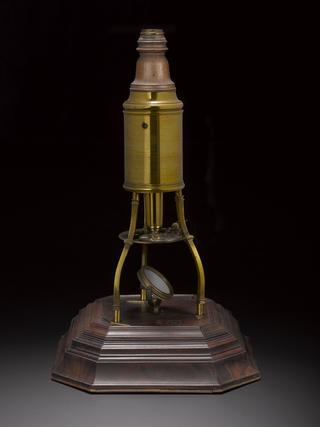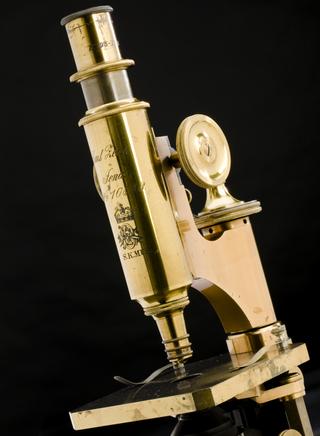Rocking microtome, Cambridge, England, 1885
The razor of this microtome is fixed and the specimen to be sliced for microscopic examination passes up and down in an arc of a circle across the razor in a rocking motion. The microtome is fixed on to a table, so that specimens fall to the desktop, before being mounted onto slides. Typical specimens in-clude human and animal body tissues and plants which could be studied by histologists in laboratories and, later, hospitals.
The rocking microtome was invented by Sir Horace Darwin (1851-1928), the son of Charles Darwin. He went on to create what would become The Cambridge Scientific Instrument Company, and the microtome was still available in the twentieth century. This microtome was loaned to the Science Museum by The Cambridge Scientific Instrument Company as a piece of new technology when it was first developed in 1885. It later became part of the permanent collection.
- Materials:
- brass (copper, zinc alloy) , ivory , metal (unknown) and mahogany (wood)
- Object Number:
- 1885-50/1
- type:
- microtome
- Image ©
- The Board of Trustees of the Science Museum
